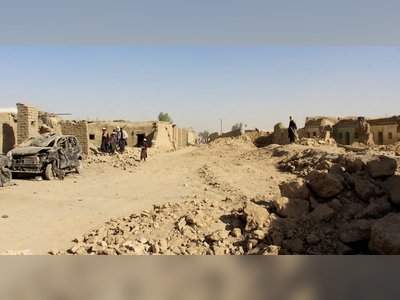Diabetes kills three people every minute: so what in the world can we do to fight it?
There is no way to sugar coat this: the World Health Organisation says that an estimated 1.6 million people died prematurely (under the age of 70), directly because of diabetes in 2016. That is three deaths per minute, or a staggering 4,300 every day.
Diabetes, ranked seventh among the top 10 global causes of death, is a formidable killer and in 2017 used up 12 per cent of the world’s health expenditure (US$727 billion), according to the International Diabetes Federation.
Nearly one third of the world’s diabetics are estimated to live in China.
The disease, which results when there is too much sugar in the blood, comes in two forms: type 1 diabetes, where the pancreas does not produce enough insulin, a hormone that enables cells to take up and use glucose for energy, and type 2, where cells do not respond effectively to insulin.
Both types of diabetes can result in long-standing heightened levels of glucose in the blood, which causes damage to the nerves, blood vessels, eyes, heart and kidney, leading to unnoticed wounds and infections, amputations, strokes, blindness, heart attacks, kidney failure and death.
There is more bad news: the vast majority (90 per cent) of diabetics have type 2 diabetes, which can wreak havoc on your body without you noticing anything – until it is too late.
Symptoms are non-specific, including feeling tired, thirsty or hungry, frequent urination, poor wound healing and weight loss.
In very bad cases, sufferers may only discover they have diabetes when they experience severe consequences, such as serious dehydration, becoming comatose, vision loss, heart attacks or gangrene requiring limb amputation.
China – home to nearly a third of all diabetics
China suffers from some of the highest levels of diabetes in the world. The nation’s strong economic growth and urbanisation with reduced physical activity in the last few decades has caused a parallel explosion in the prevalence of diabetes.
In 1980, less than 1 per cent of the population was thought to have diabetes. Yet in 2013, the prevalence in the adult population was estimated at 10.9 per cent.
The International Diabetes Federation (IDF) estimated in 2017 that China was home to 114 million diabetics – nearly 30 per cent of the world’s diabetic cases. However, this number is likely to have risen further because of rapid urbanisation and more of the population becoming affluent.
More diagnosed cases are also expected to come to light with China’s health care reform bringing about more affordable basic health insurance and screening opportunities, and biotechnology advances such as genetic tests and ethnicity-specific diagnostic values increasing detection rates.
A survey carried out by the IDF last year found that 90 per cent of Chinese parents had difficulty spotting symptoms of diabetes in children, while 80 per cent of adults around the world could not identify diabetic symptoms.
“Diabetes can be easily missed or mistaken for a different condition and this leaves people – whether children or adults – vulnerable to serious consequences,” Professor Nam Cho, president of the IDF, said in a South China Morning Post report last November.
Type 2 diabetes is known as a disease of the rich because it is associated with a diet high in refined and processed foods, obesity and a sedentary lifestyle.
Other risk factors include being elderly, having high blood pressure or cholesterol levels, the presence of a family member with diabetes, or a history of gestational diabetes.
Studies have also found that East Asians, including the Chinese population, are more predisposed to diabetes at a lower body mass index owing to genetic factors and a tendency towards visceral adiposity – increased fatty tissue around the intra-abdominal organs.
In other words, Asians may look slim, but secret caches of fat are hiding around our organs. This “hidden obesity” plays a role in the development of insulin resistance.
There’s no cure … so prevention is key
There is currently no cure for diabetes, so prevention is key. The ways to avoid this stealthy disease include doing a combination of aerobic, flexibility, balance and resistance exercises for at least 20 minutes a day – swimming, cycling, yoga and tai chi are good choices – and eating healthy unprocessed foods.
As for newly diagnosed patients, the go-to oral medication is metformin. This drug increases the body’s sensitivity to insulin, while also decreasing the amount of glucose produced by the liver and absorbed by the gut.
However, it also comes with common side effects, such as gastrointestinal upsets, nausea, vomiting, diarrhoea and weakness.
If blood glucose levels are still not well controlled, other oral or injectable medications may need to be added. These drugs can increase insulin levels (sulfonylureas, meglitinides, DPP-4 inhibitors, GLP-1 receptor agonists, insulin), heighten insulin sensitivity (thiazolidinediones), or reduce blood glucose levels (SGLT2 inhibitors, acarbose).
Besides being more costly than metformin – a month’s supply of insulin can cost US$450 – some of these drugs also have more serious side effects including excessively low blood glucose (hypoglycaemia), weight loss or weight gain, joint pain, urinary tract infections, anaemia, heart failure and pancreatitis.
Blood glucose must be monitored regularly as hypoglycaemia can have serious consequences including loss of consciousness, seizures or even death.
Patients can check and note down their blood glucose levels at regular intervals at home, but a doctor’s visit will be needed every three to six months to evaluate whether the treatment regimen requires any adjustments.
If there is a higher risk for blood vessel and heart disease, low dose aspirin, blood pressure- and cholesterol-controlling medications may also be prescribed.
Huge cost to fight global epidemic
The IDF estimates that in China alone, the health care expenditure on diabetes cost US$110 billion in 2017, even though a large proportion of patients remain undiagnosed, are pre-diabetic or are not receiving any treatment.
Even with treatment, blood glucose control is less than ideal in 50 per cent of treated Chinese patients. In patients with metabolic syndrome – a combination of type 2 diabetes, high blood pressure and elevated lipid levels, only 6 per cent manage to regain optimal levels with treatment.
The vast monetary burden of type 2 diabetes does not even take into account the costs of screening and prevention programmes, over-the-counter medications for diabetes-associated complications and lost productivity, not to mention reductions in quality of life with the deep physical and emotional toll on patients and family members.
Despite advancements in clinical research, personalised medicine and traditional Chinese medicine, the diabetes epidemic continues to spread throughout China and the world, consuming large portions of health care budgets and creating heavy economic burdens.
The American Diabetes Association published a study last year analysing data from 180 countries and estimated that the global economic burden of diabetes would reach more than US$2.1 trillion in 2030 – up from US$1.3 trillion in 2015.
As China has the largest proportion of diabetics worldwide, there is an urgent need to invest in diabetes research, including better lifestyle education and preventive strategies, screening programmes and more effective treatment modalities to help face the public health challenge of type 2 diabetes and its complications in future.















